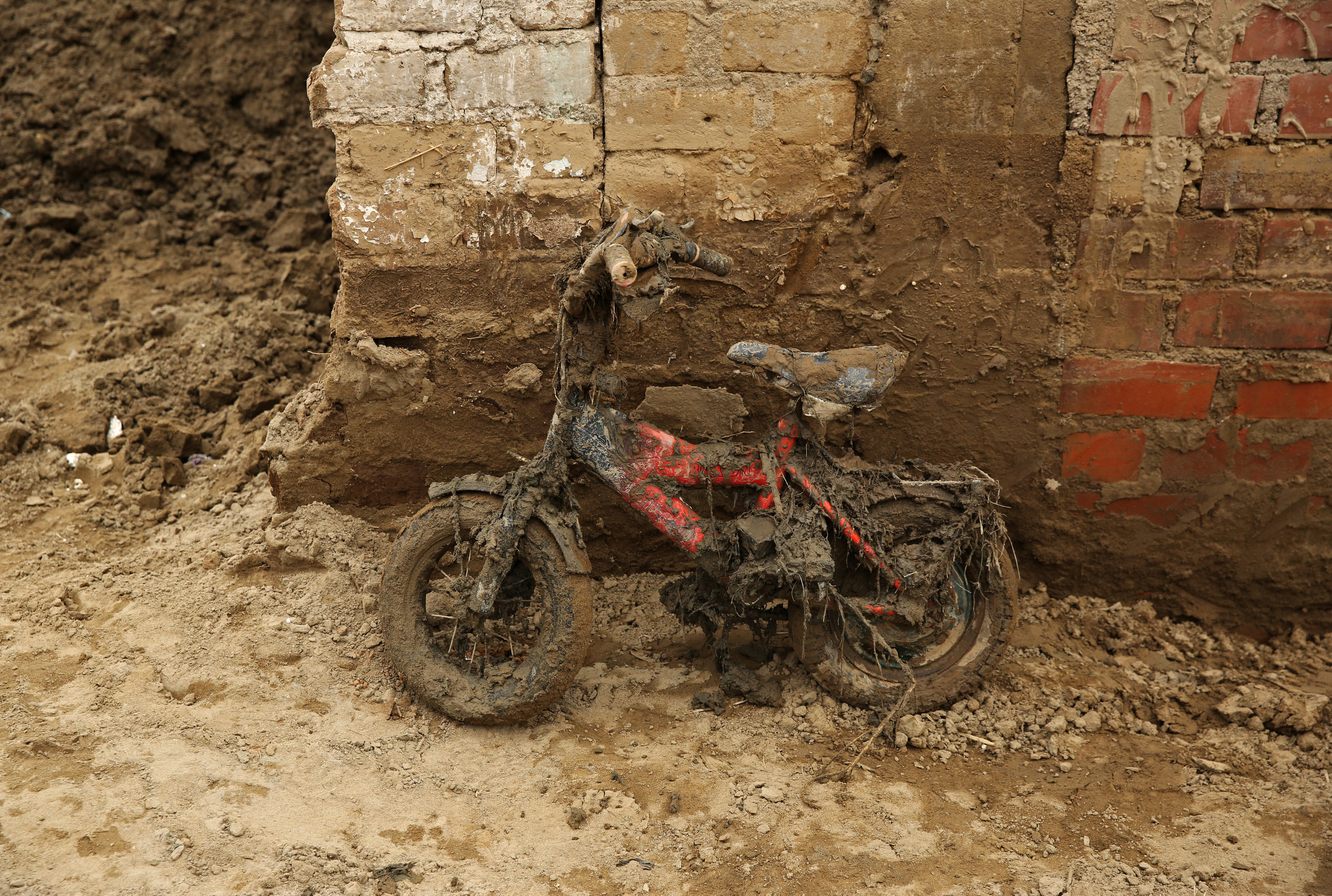By Mariana Bazo
CARAPONGO, Peru (Reuters) – On the outskirts of Lima, hundreds of householders salvage scant belongings in what is left of their homes after the Rimac River burst its banks in recent weeks amid Peru’s worst flooding disaster in decades.
Many of the hardest hit are those who can least afford it – poor Peruvians who built their homes on cheap land near the river, which runs from Peru’s central Andes to the Pacific coast.
Simeona Mosquera contemplates her uncertain future, standing in what once was her front room and is now a ruin of mud and debris.

A children’s bike leans against a wall covered in mud after rivers breached their banks due to torrential rains, causing flooding and widespread destruction in Carapongo Huachipa, Lima, Peru, March 24, 2017. REUTERS/Mariana Bazo
The 74-year-old market seller fled in the night after a neighbor told her the waters were rising dangerously, but did not think anything would happen to her house.
“When I returned the next day I saw my sofa to one side, part of the house on another side, everything all over the place, everything destroyed,” she says. “I thought, am I dreaming or is this happening?
“I lost my sofas, my bed, my cupboards, my children’s documents … there is nothing left.”
Furniture that can be recovered is perched precariously on parts of brick walls, among the only remnants of nearby homes.
Across Peru, dozens have been killed and tens of thousands displaced after sudden warming of Pacific waters off the coast unleashed torrential downpours in recent weeks. It is part of a localized El Nino phenomenon that is forecast to stretch into April.
In what’s left of Carlos Rojas’ house a pink sign reading ‘Baby Shower’ hangs on a wall, one of the few things not coated with mud. It was for a party a couple of months ago for his baby daughter, the mechanic says. He brushes down a salvaged mattress. Not much else is left.
“All the things that cost me a lot of effort to earn went in no time at all,” say Rojas. “There’s no choice but to start again.”
(Click on http://reut.rs/2o9h1JB to see a related photo essay)
(Writing by Rosalba O’Brien; Editing by Jeffrey Benkoe)
 A chair stands in mud at the home of Francisco Coca after rivers breached their banks due to torrential rains, causing flooding and widespread destruction in Carapongo Huachipa, Lima, Peru, March 21, 2017. REUTERS/Mariana Bazo
A chair stands in mud at the home of Francisco Coca after rivers breached their banks due to torrential rains, causing flooding and widespread destruction in Carapongo Huachipa, Lima, Peru, March 21, 2017. REUTERS/Mariana Bazo



